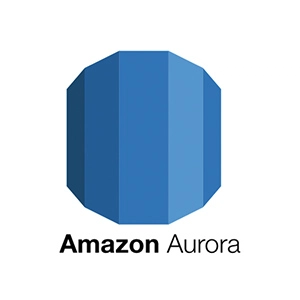🌟 High Performance, Fully Managed Relational Database
1. 🔍 Service Overview
- Service Name: Amazon Aurora
- Logo:
2. 🚀 Key Features
🔑 Top Features:
MySQL and PostgreSQL compatibility
Easily migrate existing apps with little or no code change.5x performance over MySQL / 3x over PostgreSQL
Aurora is optimized for lightning-fast throughput.High availability with automatic failover
Six-way data replication across three Availability Zones.Aurora Serverless v2
Auto-scales database capacity based on workload—ideal for variable or unpredictable traffic.Global Database
Low-latency reads and disaster recovery across multiple AWS regions.Fully Managed
Automated patching, backups, scaling, and monitoring with Amazon RDS integration.
🛠 Technical Specifications:
- Storage Capacity: Auto-scales from 10 GB to 128 TB per database instance.
- Availability: Multi-AZ support with replication and failover.
- Performance: Up to 64 vCPUs and 488 GiB RAM per instance.
- Supported Engines: MySQL (5.6, 5.7, 8.0), PostgreSQL (10 to 15).
- Regions: Available in most major AWS regions globally.
3. 💼 Use Cases
Real-Life Applications:
🛍 E-commerce Applications
Handle spikes in user traffic and transactions during high-demand periods.📊 Analytics and Reporting
Run real-time analytics with read replicas and high-throughput queries.🧪 Dev/Test Environments
Use Aurora Serverless for low-cost, auto-scaling dev/test workloads.🌍 Global SaaS Platforms
Serve users across regions with Aurora Global Database for low-latency reads.
4. 💰 Pricing Model
💵 Pricing Overview:
Amazon Aurora follows a pay-as-you-go pricing model based on:
- Instance hours: Compute usage per database instance.
- Storage: Charged per GB-month of storage consumed.
- I/O Requests: Based on volume of read/write operations.
- Backup storage: Free up to the size of your database; additional usage charged.
- Aurora Serverless v2: Billed per Aurora Capacity Unit (ACU), per second.
📌 Check the Aurora Pricing Page for region-specific costs.
5. ⚖️ Comparison with Similar Services
| Service | Type | Performance | Management | Serverless Option |
|---|---|---|---|---|
| Amazon Aurora | Relational | High | Fully Managed | ✅ Aurora Serverless |
| Amazon RDS (MySQL/PostgreSQL) | Relational | Moderate | Fully Managed | ❌ |
| Google Cloud SQL | Relational | Moderate | Fully Managed | ❌ |
| Azure Database for MySQL/PostgreSQL | Relational | Moderate | Fully Managed | ❌ |
🧠 Aurora vs RDS: Aurora offers better performance, auto-scaling storage, and advanced HA features.
6. 🧩 Benefits and Challenges
✅ Advantages:
- Seamless compatibility with popular relational engines.
- Blazing-fast performance without manual tuning.
- Resilient architecture with built-in failover.
- Serverless and global options for modern app needs.
- Integrated monitoring with CloudWatch, Performance Insights.
⚠️ Limitations or Challenges:
- Slightly higher cost than standard RDS engines.
- Some proprietary AWS features can make cross-cloud migration tricky.
- Aurora Serverless v2 still lacks support for all PostgreSQL/MySQL versions.
7. 🏢 Real-World Example or Case Study
📈 Case Study: Samsung SmartThings
Samsung migrated its SmartThings platform to Amazon Aurora to handle a global, IoT-based workload. The migration led to:
- 2x improvement in database performance
- Reduced failover time from minutes to seconds
- Simplified scaling to support millions of connected devices
👉 “Aurora enabled us to move faster, scale easier, and deliver a better experience for our users globally.” – SmartThings Engineering Team
🧵 Wrapping Up
Amazon Aurora is a powerhouse for developers and businesses needing high performance, scalability, and resilience without managing database infrastructure manually.
Whether you’re building a next-gen SaaS platform or just want to eliminate operational DB headaches, Aurora is worth exploring.



Top comments (0)